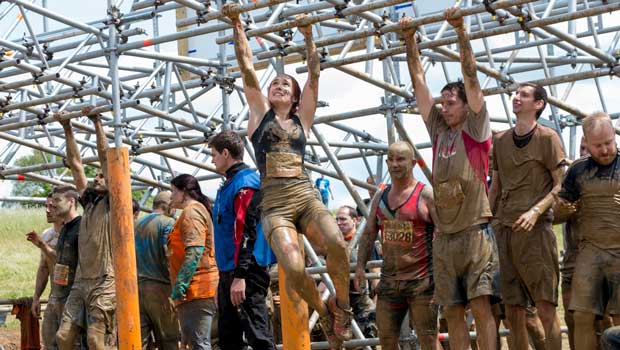
Obstacle course races and mud runs possess a sort of inherent barbaric splendor.
They are not tidy or clean — neither in the literal or figurative sense. Each event lends itself to a certain level of organized chaos that feels more like the fields of 13th century-Bannockburn than the streets of present-day Boston.
Assuming you don’t follow William Wallace into battle during your typical work week, checking out of the #CubeLife to instead become a tough Spartan warrior for the weekend carries a very obvious and understandable appeal.
But before you dive through the mud, scale some walls, evade a few flames and traverse the unforgiving terrain of whatever wilderness you choose, there are just a few things to keep in mind.
OCRs present distinct challenges
Arlington, Va.-based orthopedic surgeon Dr. Derek Ochiai finds significant benefit to competing in OCRs, but encourages participants to educate themselves on the unique set of obstacles that await them.
“I wouldn’t say that an OCR is necessarily less safe than a traditional running event, but it introduces elements that people are not used to,” he says. “People can get used to running. It’s a lot different to get used to some of the obstacles that you’re trying to maneuver during an OCR, so the chance for traumatic injury is higher.”
Ochiai, who has seen his fair share of rotator cuff, knee and ankle injuries result from OCR participation, recommends that those interested in competing simply attend their first event as a spectator to get a feel for what’s expected.
“The first time you go, just go to support your friends and check everything out when there’s no pressure to actually be doing the obstacles,” he says. “Then, if you want to do it, you have time to train for it and get to a level of fitness where you’re confident that you can do it.”
Not all races are created equal
The degree of difficulty and the nature of the course varies wildly from one race to the next. It’s important to familiarize yourself with all of your OCR options and choose the one for which you are best suited.
For example, the Warrior Dash is an excellent beginner’s race, with relatively tame obstacles, a distance of just over three miles and the option to skip obstacles without penalty. On the other end of the spectrum, the Tough Mudder is a 10 to 12 mile run with more than 25 obstacles—the last of which is a field of hanging live wires with as much as 10,000 volts of electricity. Probably not a beginner’s race.
The most serious of the lot may be the Spartan Race. The course is Navy Seal-inspired and failure to complete an obstacle is punishable by 10 to 30 burpees. Beginners would be well-advised to try the Spartan Sprint (three miles, 15+ obstacles) before graduating to the Super Spartan.
Stay hydrated and well-equipped
Don’t skip fuel stations. Half the battle—particularly in a race like the Tough Mudder, the Super Spartan or the Spartan Beast—is dehydration. Eat the bananas, drink the water and don’t be afraid to sneak in your own sustenance. Pro tip: Gatorade chews, double-wrapped in plastic sandwich bags and safety pinned to the inside of your clothes, can be invaluable.
Wear sunscreen and gear up appropriately. Don’t wear cotton. Opt instead for moisture wicking gear designed for physical activity. Pay attention to your choice of footwear, consider wearing gloves, and don’t be bashful about knee and/or elbow pads if you want a little extra protection. You’ll do your fair share of crawling.
Go all in
Above all else, OCRs are a fun and exciting gateway into head-to-toe healthy living. Athletes who intend to get the most out of their bodies on the course should adopt a full-body workout routine, complete with circuit training and a greater emphasis on upper extremities than is required from traditional running.
“I think anything that makes people excited about exercising is great,” Ochiai says. “The benefits of cardio exercise far outweigh potential risks. If OCRs are what a person likes to do and it keeps them motivated to stay fit, I think that’s great.”
So, go for it. Train up, eat right, and commit to your preparation. That way, when race day arrives, you can relax and have a blast, knowing that you’re ready to bring it.
 Sign up for a race.
Sign up for a race.


